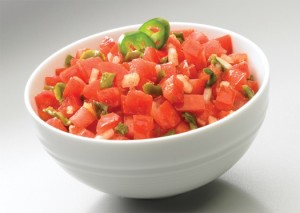Vegetables and Fruits
Green vegetables such as cabbage, broccoli, kale, cabbage and Brussels sprouts contain indoles, sulforaphane and isotheicyanates, constituents that encourage certain genes in the liver to break down carcinogens caused by overcooked foods. The white and green vegetable group includes asparagus, chives, shallots, onions and garlic that contain allyl sulfides, constituents that stimulate antioxidant reactions in cells.
Orange fruits and vegetables including sweet potatoes, apricots, carrots, pumpkins, mangoes and cantaloupes contain beta-carotene which converts to vitamin A in the body, a nutrient that’s important for healthy vision. The red group, such as watermelon, tomatoes and pink grapefruits contain lycopene, a nutrient associated with a decreased risk of aggressive prostate cancer.
The purple and red group, including plums, pomegranates, grapes and assorted berries, contains anthocyanins, which contain properties that may prevent cancer, discourage inflammation and promote heart health. The yellow and green group, including green peas, collard greens, spinach, avocado, honeydew melon and yellow corn, contain zeaxanthin and lutein, which are beneficial for eye health.
Fish
Fatty fish such as salmon, mackerel, sardines, herring, rainbow trout and white albacore tuna are high in omega-3 fatty acids, nutrients that may reduce the risks of prostate cancer, strokes, heart attacks and advanced age mental health decline, according to Harvard Medical School. Eating fish frequently may also help prevent dangerous heart rhythms that lead to sudden cardiac death.
Oatmeal
Oatmeal contains both soluble and insoluble fiber. Insoluble fiber is important for digestive health, while soluble fiber finds and removes cholesterol before it can block arteries.
Almonds
Almonds are rich in vitamin E, protein, iron, calcium and fiber, and contain antioxidant flavonoids, which may prevent LDL or bad cholesterol from oxidizing and promoting cancer within cells.
Beans
Like almonds and oatmeal, beans are high in fiber and may help reduce LDL cholesterol. Beans also contain the nutrients magnesium, potassium and folate.
Pumpkin Seeds
Like fish, pumpkin seeds contain omega-3 fatty acids that may help promote prostate health. Pumpkin seeds also contain zinc, a mineral that may help to promote prostate health.
–
source: LIVESTRONG














